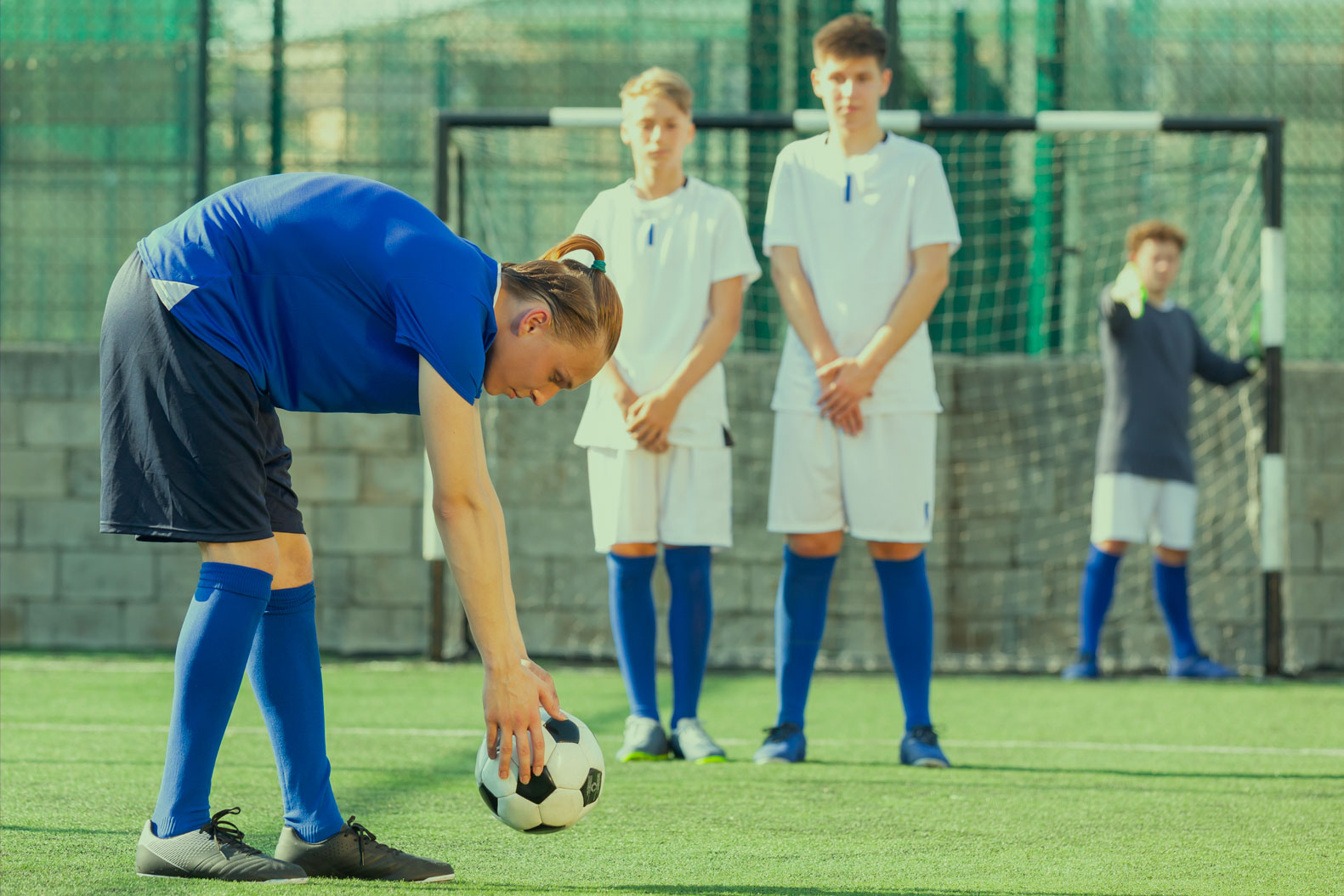
Free-kick management: advanced techniques and strategies for goalkeepers
Antoine Roex, Keeper In Motion – 03 October 2024
Managing free-kicks is a crucial challenge for goalkeepers. In this article, discover advanced techniques and strategies for anticipating, positioning your wall correctly and reacting effectively against the most formidable free-kick takers. Improve your performance and become a true free-kick expert with these practical tips.
Positioning and Anticipation
For a goalkeeper, positioning yourself correctly for free-kicks is an essential key. This starts with understanding the distance, the angle of the shot and the position of the ball on the pitch. At a central free kick, the goalkeeper should position himself slightly towards the far post, leaving the wall to protect the near post. This technique allows more of the goal to be covered, reducing the angle of the opponent’s shot. For wider free-kicks, it is advisable to position yourself towards the center of the goal, ready to react to a direct shot or pass.
The goalkeeper should also adjust his position according to the flow of the match. For example, when the opposition is exerting strong pressure, the goalkeeper will position himself closer to his goal line to better cover the angles and anticipate a direct shot. On the other hand, if his team is dominating and pushing forward, he can act as a ‘libero keeper’ to intercept long passes behind the defense.
Building and managing the wall
Creating a wall is an essential part of defending free kicks effectively. The goalkeeper’s responsibility is to position the wall correctly. Generally made up of four or five players, the wall must cover part of the goal to force the attacker to aim at a narrower angle. The goalkeeper positions an ‘anchor player’ who receives instructions from him to line up the other defenders. This player is often positioned near the near post, while the goalkeeper keeps an eye on the whole action.
The wall must be compact enough to prevent the ball passing between the players, but it must also be flexible enough to react to shots over or around the wall. The players must assess whether the shooter is going to attempt a high or low shot and react accordingly, by jumping or staying on the ground.
Diving and parrying techniques
Mastering diving techniques is crucial for goalkeepers when dealing with free-kicks. Two types of dive are particularly important: the high dive, often used for shots into the top corner, and the low dive, for low shots. Goalkeepers must not only react quickly, but also be able to assess the trajectory of the ball as soon as it leaves the shooter’s foot. A good dive relies on perfect synchronization between anticipation and speed of execution.
Parrying techniques, such as catching or deflecting, also play a key role. Catching the ball is ideal to avoid any dangerous rebound, but if the shot is too powerful or difficult to control, the goalkeeper can choose to deflect the ball with his fists or palms, taking care to send it out of reach of the opposing attackers.
Communication with the defense
The goalkeeper’s role is not limited to protecting the goal; he is also the conductor of the defense. Communication is vital, especially at free-kicks. The goalkeeper must give clear, concise instructions to his defenders so that they position themselves correctly. Commands such as ‘push forward’, ‘stay’ or ‘it’s for me’ help to maintain coordination and avoid any confusion.
This communication extends to the organization of the defense’s movements during a free kick. The goalkeeper must ensure that each player knows where to stand, whether to jump or stay on the ground, and whether to cover a specific area. The ability to coordinate the defense quickly and effectively can mean the difference between conceding a goal and defending successfully.
Conclusion
The management of free-kicks by goalkeepers relies on a combination of technique, strategy and communication. Good positioning, rigorous organization of the defensive wall, sharp reflexes when diving and effective communication with the defence are all elements that can transform a dangerous phase of play into an opportunity for a counter-attack. With regular training and practice, these skills can be honed to a level of excellence in free-kick management.
References :
